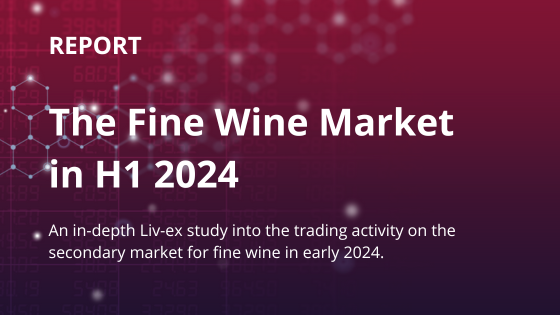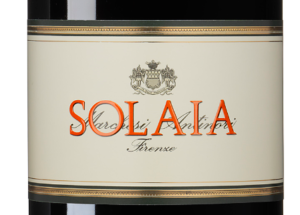
Owner: Marchesi Antinori
Classification: Toscana IGT
Vineyard area in production: 20 hectares located in Chianti Classico.
Colour: Red
Total annual production: 55,000 bottles
Production history
Solaia was first created as an experiment in 1978 when the vineyards for Tignanello – Solaia’s sister wine – produced an excess of Cabernet grapes. Marchesi Antinori decided to use the additional grapes and produced 3,600 bottles of the wine that became known as Solaia.
The original blend for the 1978 vintage was 80% Cabernet Sauvignon and 20% Cabernet Franc. This was then repeated for the 1979 vintage. In the following years Sangiovese was introduced and the blend now typically consists of 75% Cabernet Sauvignon, 20% Sangiovese and 5% Cabernet Franc. The only exception to this was the 2002 vintage, when the Sangiovese grapes failed to ripen fully. As a result, Solaia 2002 is known as the “annata diversa” – different vintage – because it is the only recent wine to solely use the Cabernet variety.
Solaia was not made in a handful of difficult years: 1980, 1981, 1983, 1984 and 1992.
Market performance
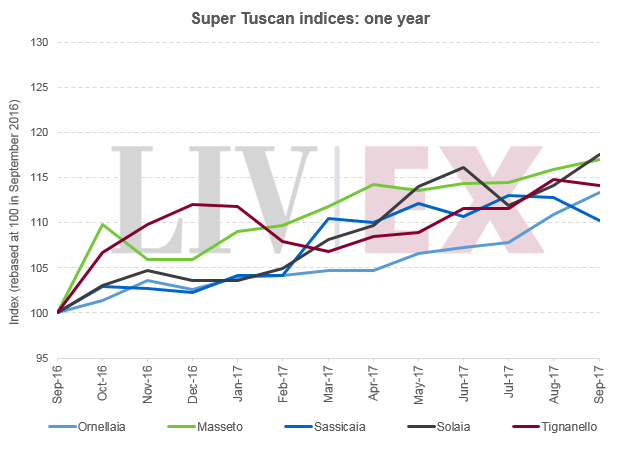
The Solaia index – which tracks the price movement of the last ten physical vintages – is up 17.6% year-on-year. It is the best performing Super Tuscan over this period, closely followed by Masseto which is up 16.9%. Both wines have outperformed the Italy 100 which is up 15% over the same period.
The chart below shows the change in prices of Solaia for the last ten physical vintages. The two oldest vintages saw the largest price increases over the past twelve months: the 2005 and 2004 were up 25.6% and 23.2% respectively. The 2010 followed behind with a 10.8% increase.
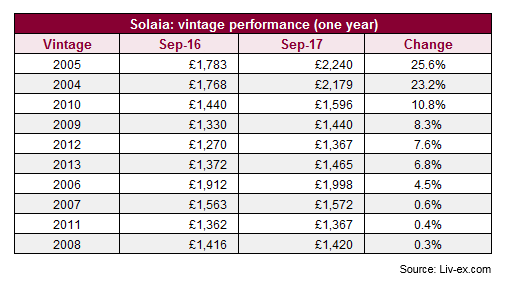
The chart below compares Solaia Market Prices against their Wine Advocate scores. The 2013 has the highest score of 97+ points. Monic Larner described the wine as being “profound and meaningful”, adding that “the best is yet to come: this Solaia is built for long cellar aging.”
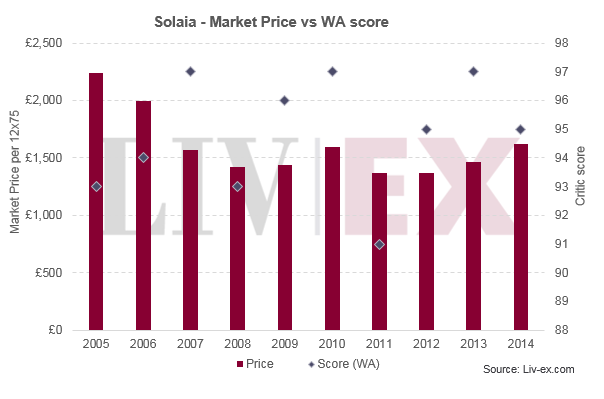
As the chart below shows, prices for Solaia are highly (87%) correlated to age. The wines follow the traditional price progression of fine wine: prices rise as the wine gets older and quantities in the market deplete.
When analysing current Market Prices for Solaia using Liv-ex’s ‘fair value’ methodology, the 2008 vintage falls below the trend line. With several years in bottle, the wine is priced around or below a number of recent vintages currently available in the market. It may therefore represent an opportunity for buyers interested in bottle age.
The 2007 vintage also looks attractive.
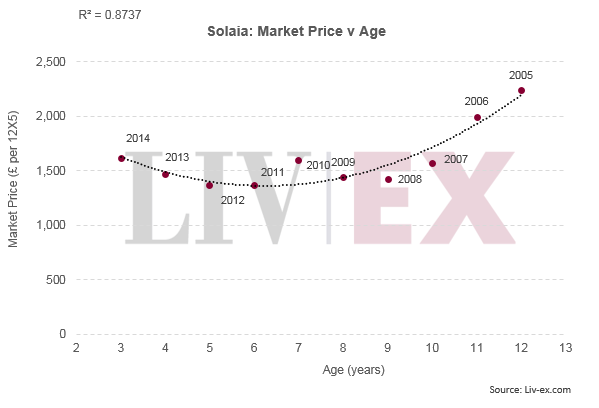
Looking for more? Back in January, Liv-ex featured a spotlight on Solaia’s sister wine, Tignanello. To read the post, please click here.
[mc4wp_form id=”18204″]




